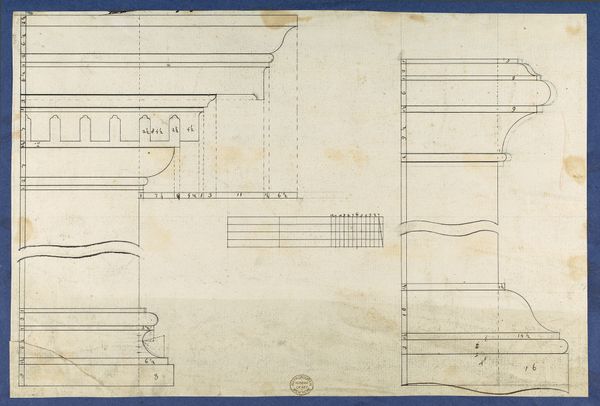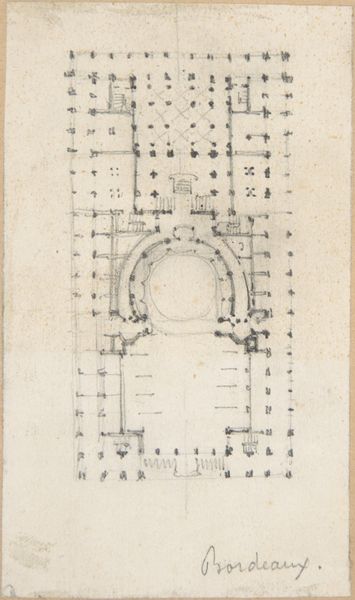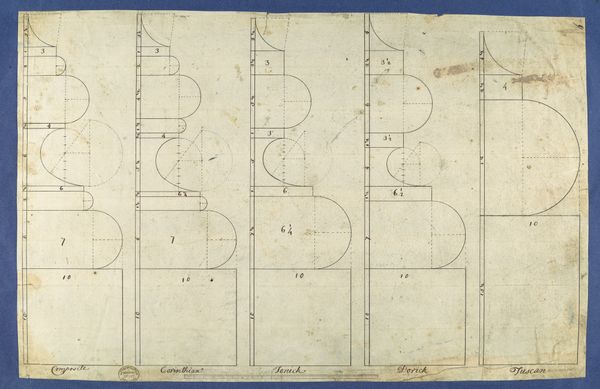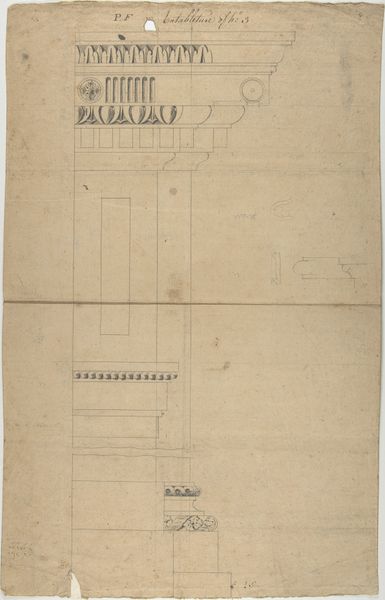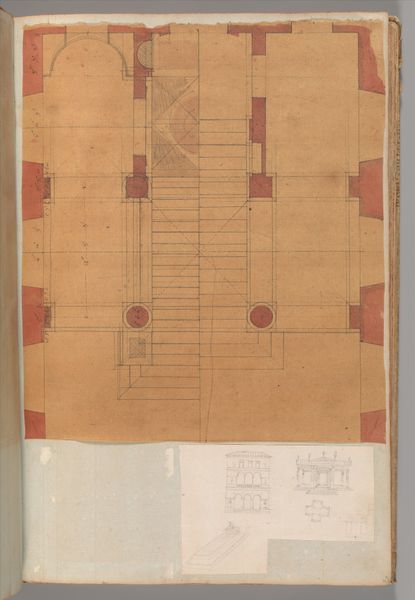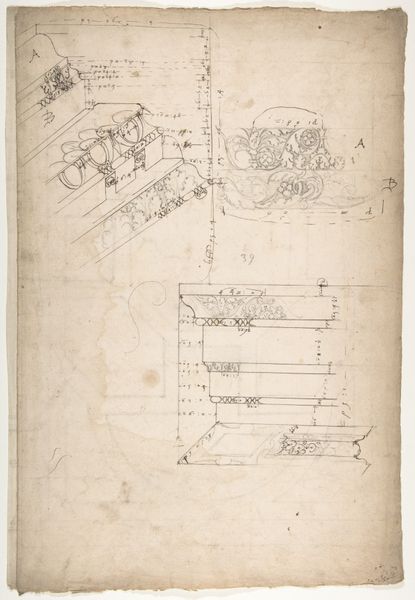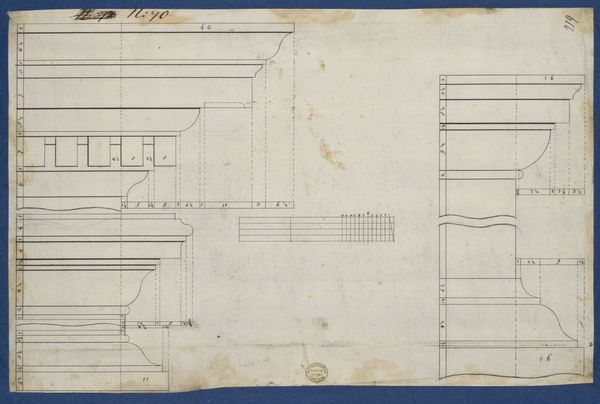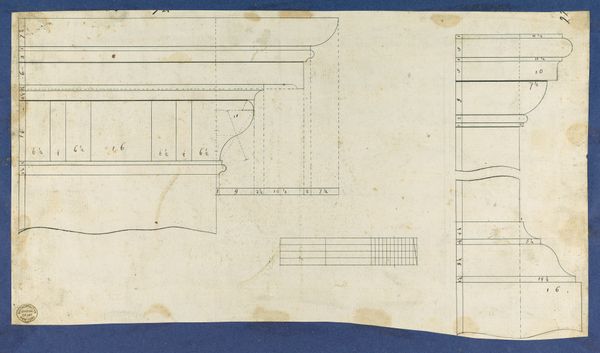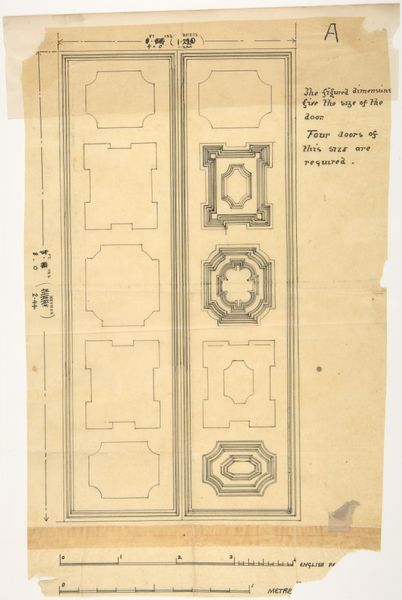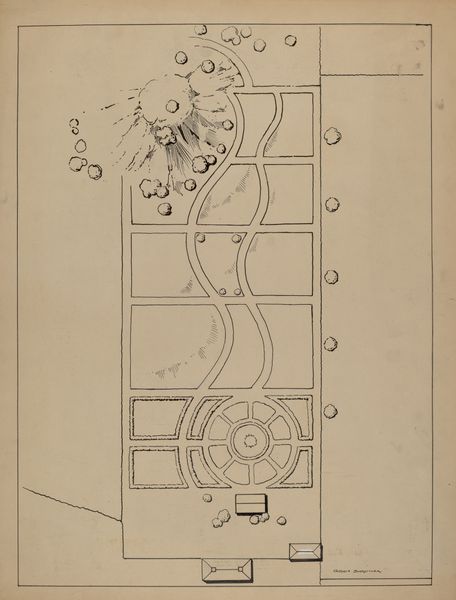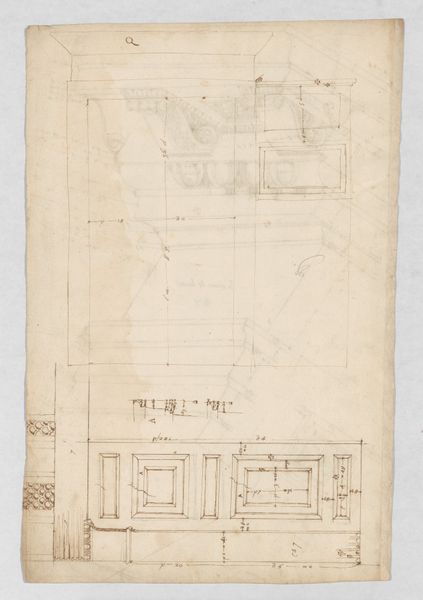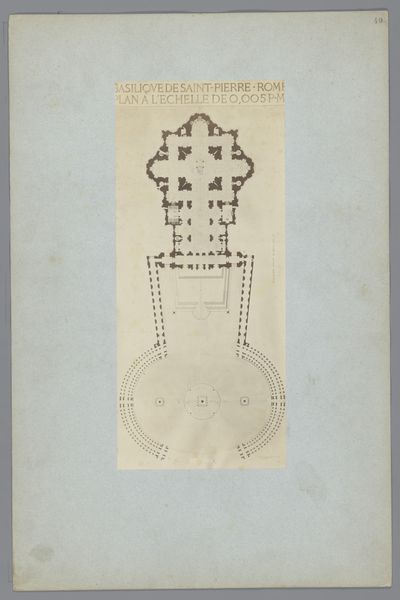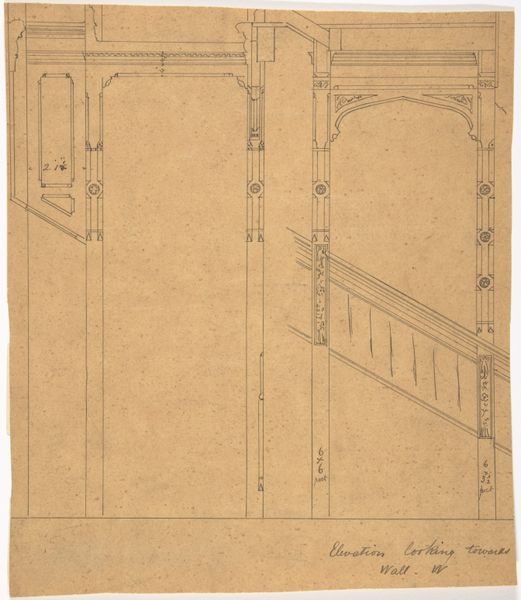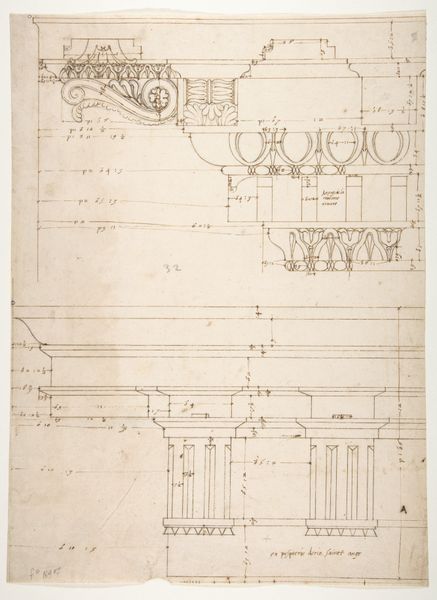
Rule for Drawing the Spiral Lines of the Volute of the Ionic Order, in Chippendale Drawings, Vol. I 1753
0:00
0:00
drawing, print, architecture
#
drawing
#
historical design
# print
#
form
#
11_renaissance
#
historical fashion
#
geometric
#
geometric-abstraction
#
line
#
architecture
Dimensions: sheet: 13 3/4 x 8 13/16 in. (34.9 x 22.4 cm)
Copyright: Public Domain
Thomas Chippendale created "Rule for Drawing the Spiral Lines of the Volute of the Ionic Order" as part of his pattern book, *The Gentleman and Cabinet-Maker's Director,* which was first published in London in 1754. These drawings provided detailed instructions and designs for furniture and architectural elements, reflecting the 18th century's fascination with classical forms. As a craftsman and designer during the British Enlightenment, Chippendale catered to the tastes of the burgeoning middle class and aristocracy, who sought refinement and sophistication in their surroundings. Yet, what does it mean to have such precise drawings made at a time when colonialism was rampant? When wealth and access were defined by gender, race, and class? These designs, while appearing neutral, were part of a complex social fabric where power and privilege were visually encoded into the very structures of everyday life. Consider how these drawings, with their aspirations to classical ideals, subtly reinforced existing hierarchies.
Comments
No comments
Be the first to comment and join the conversation on the ultimate creative platform.
